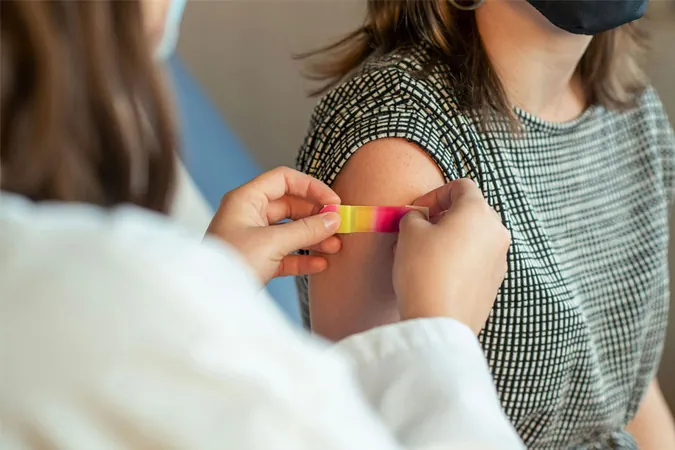
Denmark on the Brink of Eradicating Major Cancer-Causing HPV Strains Thanks to Vaccine Rollout
2025-09-02
Author: Jia
Denmark's Groundbreaking HPV Vaccine Success
Denmark is making monumental strides in the fight against cancer, effectively eliminating infections from the two most dangerous strains of human papillomavirus (HPV) since the introduction of its vaccine in 2008, according to recent data.
A Game Changer for Women's Health
Published in the journal Eurosurveillance, this research holds transformative implications for cervical cancer screening in vaccinated populations. With the ongoing rollout of vaccines protecting against multiple high-risk HPV types, Denmark's approach could reshape the future of cancer prevention.
A Deadly Threat Reduced
Cervical cancer remains a significant health threat, especially for women aged 15 to 44 in Europe, following breast cancer. Human papillomavirus (HPV) stands as the leading cause of cervical cancer, with at least 14 high-risk variants identified, including the notorious types 16 and 18, which were responsible for 74% of cervical cancers in Denmark before vaccination began.
From Four Types to Nine: A Stronger Defense
Initially, the vaccine provided protection against four HPV types, including the high-risk strains 16 and 18 as well as the lower-risk 6 and 11. However, since 2017, Danish girls have been vaccinated against nine HPV types, covering approximately 90% of cervical cancer cases, representing a monumental leap in public health strategy.
Research Analysis: Less HPV, More Hope
To gauge the effectiveness of these programs, Dr. Mette Hartmann Nonboe and her team from Zealand University Hospital analyzed cervical cell samples from Danish women aged 22 to 30 from 2017 to 2024. Notably, 2017 marked a pivotal year as the first cohort of vaccinated women began entering cervical cancer screening.
Hope for a Safer Future
"Women who received the HPV vaccine as teenagers are expected to have a significantly lower risk of cervical cancer compared to previous generations," Nonboe stated, highlighting the urgent need to reassess future screening protocols.
Near Elimination of High-Risk HPV Types
The findings reveal an astounding reduction in the prevalence of vaccine-covered high-risk HPV types (HPV16/18), plummeting from 15-17% to less than 1% among vaccinated women by 2021. Even among unvaccinated women, the prevalence of these strains has decreased to 5%, indicating a phenomenon known as "population immunity." This suggests that the vaccine's widespread use is beneficial for the entire community.
Continuing Challenges Ahead
However, the battle isn't over. About one-third of women screened during the study period still showed infections with high-risk HPV types not covered by the original vaccines, with vaccinated women experiencing more new infections than their unvaccinated counterparts. As the newer nine-valent vaccine takes effect, researchers anticipate a decline in these infections.
Revisiting Screening Guidelines
As the landscape of HPV infections evolves, the need for revised cervical cancer screening guidelines under the new vaccination strategy becomes increasingly critical. Nonboe and her colleagues advocate for an urgent reevaluation to adapt to the promising results of this pivotal research.


 Brasil (PT)
Brasil (PT)
 Canada (EN)
Canada (EN)
 Chile (ES)
Chile (ES)
 Česko (CS)
Česko (CS)
 대한민국 (KO)
대한민국 (KO)
 España (ES)
España (ES)
 France (FR)
France (FR)
 Hong Kong (EN)
Hong Kong (EN)
 Italia (IT)
Italia (IT)
 日本 (JA)
日本 (JA)
 Magyarország (HU)
Magyarország (HU)
 Norge (NO)
Norge (NO)
 Polska (PL)
Polska (PL)
 Schweiz (DE)
Schweiz (DE)
 Singapore (EN)
Singapore (EN)
 Sverige (SV)
Sverige (SV)
 Suomi (FI)
Suomi (FI)
 Türkiye (TR)
Türkiye (TR)
 الإمارات العربية المتحدة (AR)
الإمارات العربية المتحدة (AR)